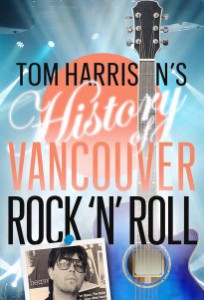Well, why has there been a resurgence in the appearance and sales of the vinyl record?
I asked. Nobody had a real significant answer. There were a lot of little reasons, most you’ve heard before. A record in good condition, played on a good turntable sounds better than a compact disc. Handling a record is more tactile, which is reassuring, than a CD, and the artwork wrapping around a record is more creative and easier to read. Anyone who has thumbed through a row of CDs at their local record store with a resulting eye strain and stiff neck knows this. Hell, a record even smells better.
The physical limitation of a record pays unexpected dividends, too. Vinyl usually is divided into approximately 17 minutes a side. Getting up to turn a record over creates a brief intermission while 34 minutes for a record is long enough. Often, if a CD of new material has a 60 minute duration, it runs out of steam around the 30 minute mark. That extra 30 minutes might be 30 minutes too much. An argument I used to use was that The Rolling Stones’ Exile On Main Street – now regarded as a masterpiece, but considered a sprawling overlong mess when it was released nearly 30 years ago – was approximately 66 minutes long and was the band’s 13th or 14th album. I get impatient when a new band has a 70 minute debut CD.
Then, there is the matter of sound. Proponents of vinyl cite a vinyl record’s warmth whereas all that CDs offer is clarity and durability. The science of remastering might have squashed this argument, but continuous listening to CDs can lead to ear fatigue. You get tired of hearing CDs faster than vinyl. The experience is compared to being slapped in the side of the head continually.
Vinyl is making a comeback via two sources. Older people for whom the record is nostalgia and rediscovery. Kids are discovering lots of great music by plundering their parents’ collection. The latter is a romantic notion – putting on a record seems antiquated but is a conscious act. It is congruent with a taste for retro fashion, for old TV shows, for style in general.
But no doubt sales of new and old vinyl is up. Many bands now have a clause in their contract that insures vinyl releases. Many deleted records are back in print on vinyl. I asked several record stores if they could verify the resurgence of vinyl. All said yes. One speculated that vinyl sales was keeping it in business. Another has stocked up on turntables to sell to those who got rid of theirs long ago and want to hear their records again.
But why? That was a question I sought an answer to when CFMI FM asked me to be a guest on the Brother Jake show, January 20. The "classic rock" station’s Brother Jake presently has a series called On The Record, in which local personalities (I guess I qualify) play a selection of vinyl. I didn’t know how many guests came before me or how many guests would come after, but I wanted to offer some kind of perspective on this trend.
As near as I can figure, vinyl is a symbol of a simpler time. In the last few years there have been cassettes, DATs, CDs, MP3s, iPods and a dizzying number of ways to market and hear music. Vinyl, by comparison, was stable and coincided with a lengthy creative period. Now, music has been devalued and seems instantly disposable. There was crap released in the 60s and 70s, too, but there was less of it. There are still good records being made but you have to look harder for them. Thus going back to vinyl is a kind of return to security.
As it turned out, CFMI didn’t ask any of the questions I was prepared to try to answer. Just coming in with a few favorite records was enough, a symbolic act in itself.
I enjoyed the experience. The hour went fast, but it put me back in touch with records that were gathering dust in my basement. There were thousands of them, 45s and albums. I realized that one reason I’ve held on to my records is their uniqueness. Many will never be released on CD or in any other form. Another discovery is that many of my favorite records not only are at least 30 years old but are only 30 minutes in length. I also realized that every one of the albums I took to Brother Jake had been issued on CD, often with extra tracks. However, I reasoned, my relationship with these records began with vinyl. That’s where their story starts, and mine, too.
If anybody is wondering, I spun the 45 of The Who’s I Can See For Miles, the 45 of Aerosmith’s Dream On, the title track of The Pretty Things’ SF Sorrow, The Yardbirds’ Strollin’ On and The Zombies’ Time Of The Season. Each has its own story.
The other selections that I didn’t play were The Byrds’ Change Is Now, Love’s Alone Again Or, The Kinks’ live version of Here Comes Yet Another Day, Beau Brummels’ Deep Water and the 45 of Buffalo Springfield’s Mr. Soul. These, too, have a story.

